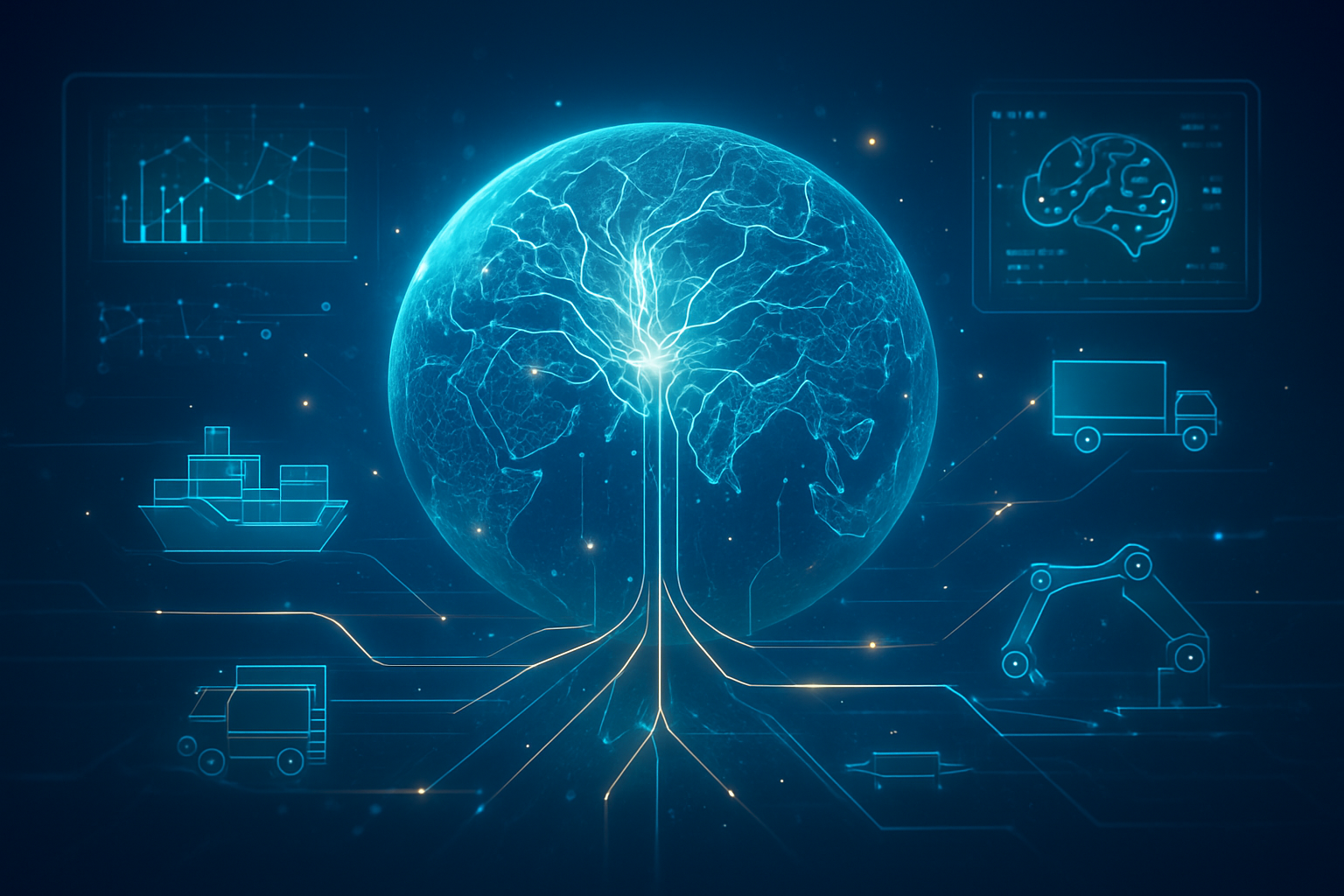The landscape of Artificial Intelligence is undergoing a profound transformation as breakthroughs in multi-modal AI and advanced autonomous agents converge, promising a new era of intelligent systems capable of complex reasoning and real-world interaction. These developments, spearheaded by major players and innovative startups, are pushing the boundaries of what AI can achieve, moving beyond sophisticated pattern recognition to genuine understanding and proactive problem-solving across diverse data types. The immediate significance lies in the potential for AI to transition from being a powerful tool to an indispensable collaborator, fundamentally altering workflows in industries from software development to creative content creation.
Unpacking the Technical Marvels: Beyond Text and Towards True Understanding
The current wave of AI advancement is marked by a significant leap in multi-modal capabilities and the emergence of highly sophisticated AI agents. Multi-modal AI, exemplified by OpenAI's GPT-4 Vision (GPT-4V) and Google's Gemini models, allows AI to seamlessly process and integrate information from various modalities—text, images, audio, and video—much like humans do. GPT-4V can analyze visual inputs, interpret charts, and even generate code from a visual layout, while Google's Gemini (NASDAQ: GOOGL), especially its Ultra and Pro versions, was engineered from the ground up for native multi-modality, enabling it to explain complex subjects by reasoning across different data types. This native integration represents a significant departure from earlier, more siloed AI systems, where different modalities were often processed separately before being combined.
Further pushing the envelope is OpenAI's Sora, a text-to-video generative AI application capable of creating highly detailed, high-definition video clips from simple text descriptions. Sora's ability to realistically interpret the physical world and transform static images into dynamic scenes is a critical step towards AI understanding the intricacies of our physical reality, paving the way for advanced general intelligence. These multi-modal capabilities are not merely about processing more data; they are about fostering a deeper, more contextual understanding that mirrors human cognitive processes.
Complementing these multi-modal advancements are sophisticated AI agents that can autonomously plan, execute, and adapt to complex tasks. Cognition Labs' Devin, hailed as the first AI software engineer, can independently tackle intricate engineering challenges, learn new technologies, build applications end-to-end, and even find and fix bugs in codebases. Operating within a sandboxed environment with developer tools, Devin significantly outperforms previous state-of-the-art models in resolving real-world GitHub issues. Similarly, Google is developing experimental "Gemini Agents" that leverage Gemini's reasoning and tool-calling capabilities to complete multi-step tasks by integrating with applications like Gmail and Calendar. These agents differ from previous automation tools by incorporating self-reflection, memory, and tool-use, allowing them to learn and make decisions without constant human oversight, marking a significant evolution from rule-based systems to truly autonomous problem-solvers. The initial reactions from the AI research community and industry experts are a mix of awe and caution, recognizing the immense potential while also highlighting the need for robust testing and ethical guidelines.
Reshaping the Corporate Landscape: Who Benefits and Who Adapts?
This new wave of AI innovation is poised to dramatically impact AI companies, tech giants, and startups alike. Companies at the forefront of multi-modal AI and agentic systems, such as Google (NASDAQ: GOOGL), Microsoft (NASDAQ: MSFT) (through its investment in OpenAI), and OpenAI itself, stand to benefit immensely. Their deep research capabilities, vast data resources, and access to immense computational power position them as leaders in developing these complex technologies. Startups like Cognition Labs are also demonstrating that specialized innovation can carve out significant niches, potentially disrupting established sectors like software development.
The competitive implications are profound, accelerating the race for Artificial General Intelligence (AGI). Tech giants are vying for market dominance by integrating these advanced capabilities into their core products and services. For instance, Microsoft's Copilot, powered by OpenAI's models, is rapidly becoming an indispensable tool for developers and knowledge workers, while Google's Gemini is being woven into its ecosystem, from search to cloud services. This could disrupt existing products and services that rely on human-intensive tasks, such as customer service, content creation, and even some aspects of software engineering. Companies that fail to adopt or develop their own advanced AI capabilities risk falling behind, as these new tools offer significant strategic advantages in efficiency, innovation, and market positioning. The ability of AI agents to autonomously manage complex workflows could redefine entire business models, forcing companies across all sectors to re-evaluate their operational strategies.
A Broader Canvas: AI's Evolving Role in Society
These advancements fit squarely into the broader AI landscape, signaling a shift towards AI systems that exhibit more human-like intelligence, particularly in their ability to perform "System 2" reasoning—a slower, more deliberate, and logical form of thinking. Techniques like Chain-of-Thought (CoT) reasoning, which break down complex problems into intermediate steps, are enhancing LLMs' accuracy in multi-step problem-solving and logical deduction. The integration of multi-modal understanding with agentic capabilities moves AI closer to truly understanding and interacting with the complexities of the real world, rather than just processing isolated data points.
The impacts across industries are far-reaching. In healthcare, multi-modal AI can integrate diverse data for diagnostics and personalized treatment plans. In creative industries, tools like Sora could democratize video production, enabling new forms of content creation but also raising concerns about job displacement and the proliferation of deepfakes and misinformation. For software development, autonomous agents like Devin promise to boost efficiency by automating complex coding tasks, allowing human developers to focus on higher-level problem-solving. However, this transformative power also brings potential concerns regarding ethical AI, bias in decision-making, and the need for robust governance frameworks to ensure responsible deployment. These breakthroughs represent a significant milestone, comparable to the advent of the internet or the mobile revolution, in their potential to fundamentally alter how we live and work.
The Horizon of Innovation: What Comes Next?
Looking ahead, the near-term and long-term developments in multi-modal AI and advanced agents are expected to be nothing short of revolutionary. We can anticipate more sophisticated AI agents capable of handling even more complex, end-to-end tasks without constant human intervention, potentially managing entire projects from conceptualization to execution. The context windows of LLMs will continue to expand, allowing for the processing of even vaster amounts of information, leading to more nuanced reasoning and understanding. Potential applications are boundless, ranging from hyper-personalized educational experiences and advanced scientific discovery to fully autonomous business operations in sales, finance, and customer service.
However, significant challenges remain. Ensuring the reliability and predictability of these autonomous systems, especially in high-stakes environments, is paramount. Addressing potential biases embedded in training data and ensuring the interpretability and transparency of their complex reasoning processes will be crucial for public trust and ethical deployment. Experts predict a continued focus on developing robust safety mechanisms and establishing clear regulatory frameworks to guide the development and deployment of increasingly powerful AI. The next frontier will likely involve AI agents that can not only understand and act but also learn and adapt continuously in dynamic, unstructured environments, moving closer to true artificial general intelligence.
A New Chapter in AI History: Reflecting on a Transformative Moment
The convergence of multi-modal AI and advanced autonomous agents marks a pivotal moment in the history of Artificial Intelligence. Key takeaways include the shift from single-modality processing to integrated, human-like perception, and the evolution of AI from reactive tools to proactive, problem-solving collaborators. This development signifies more than just incremental progress; it represents a fundamental redefinition of AI's capabilities and its role in society.
The long-term impact will likely include a profound restructuring of industries, an acceleration of innovation, and a re-evaluation of human-computer interaction. While the benefits in efficiency, creativity, and problem-solving are immense, the challenges of ethical governance, job market shifts, and ensuring AI safety will require careful and continuous attention. In the coming weeks and months, we should watch for further demonstrations of agentic capabilities, advancements in multi-modal reasoning benchmarks, and the emergence of new applications that leverage these powerful integrated AI systems. The journey towards truly intelligent and autonomous AI is accelerating, and its implications will continue to unfold, shaping the technological and societal landscape for decades to come.
This content is intended for informational purposes only and represents analysis of current AI developments.
TokenRing AI delivers enterprise-grade solutions for multi-agent AI workflow orchestration, AI-powered development tools, and seamless remote collaboration platforms.
For more information, visit https://www.tokenring.ai/.









